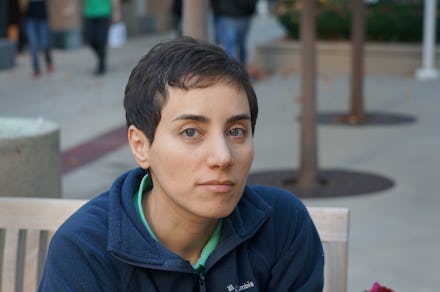First Woman Ever Wins 'Nobel Prize' of Mathematics

If you had any doubts about whether or not women can absolutely own the STEM fields, let Dr. Maryam Mirzakhani dispel them for you.
The Stanford professor, a widely-respected pioneer on "dynamics and geometry of Riemann surfaces and their moduli spaces," made history in a major way on Tuesday by becoming the first woman ever to win the Fields Medal: the highest international prize in mathematics, and sometimes thought of as the "Nobel Prize of Mathematics."
The award, given out every four years by the International Mathematical Union (IMU), recognizes top mathematics scholars around the world under the age of 40. All 52 previous winners had been men. Tuesday's event marked a momentous occasion not only for Mirzakhani, but for the world of STEM in general.
Mirzakhani's success was "hugely symbolic and I hope it will encourage more women to get into mathematics because we need more women. I am very happy that now we can put to rest that particular 'it has never happened before,'" IMU president Ingrid Daubechies told Time.
"In the U.S. about 30% of the graduate population at research departments are women. But a higher percentage of women leave academia than men, so we have an even lower percentage of women postdocs and an even lower percentage of women in faculty. It is not just that the numbers are small, it is also that more leave percentage wise. I hope that will change," Daubechies added.
Much progress still needs to be made for women in STEM. While Mirzakhani's success is certainly exciting, stories like hers are still all too rare in these male-dominated fields. Just last week, a University of Wisconsin-Milwaukee study found that a stunning number of women in STEM end up leaving their careers prematurely; nearly 40% of female engineers with degrees in the field quit their jobs in a few years or never apply to one at all.
And it's not for lack of desire: Research suggests that despite boys and girls roughly showing the same amount of interest in science in elementary school, the gap significantly increases throughout higher education and beyond. The lack of proper mentoring and the systemic societal bias towards male mathematicians and scientists are considered the main contributing factors to this phenomenon.
While Mirzakhani may have no interest in being simply known as "the face of women in mathematics," as she told Quanta Magazine, her achievement marks a watershed moment for women in STEM — and if it encourages more girls and young women to pursue their dreams, it would be no small feat.